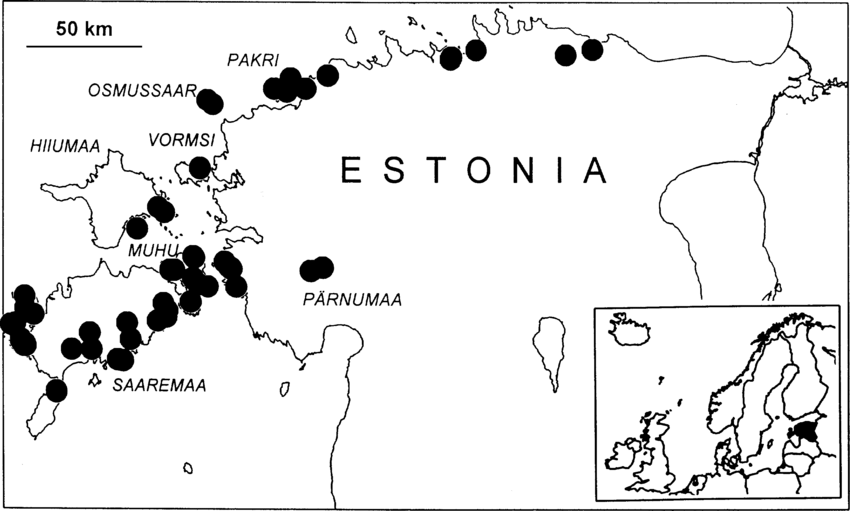“I grew up among junipers and stones,” an old poem says, “they are my brothers and sisters, those without names.”
We cycled through alvar landscapes - patches of stony, thin soils overlaying limestone or dolostone that support a stunted vegetation - in search of a telling association of kadakaid ja kive to photograph but in vain.
Alvars are semi-natural landscapes left over from the retreating ice sheets at the end of the last ice age, and because of their geology, they are rare. Islands off the coast of Sweden, the eastern Baltic, and the UK and Ireland are almost entirely where alvars are to be found. Estonia holds one-third of the world’s total.

Where to find alvars in Estonia
The ecologists we met had pointed us in the direction of alvars, an ecosystem of interest to them because they are endangered. Where livestock farming and other agriculture have intensified, alvars have degraded, and where the farm animals are taken away, these areas can become overgrown in juniper and Baltic pine.
Traditionally used by villagers for subsistence grazing, alvars represent an ecological balance over a long period of time between people and nature. Where they are in balance, alvars are species rich; a single alvar can hold hundreds of species of plants, birds and insects, within a small area.
An Estonian nature campaign has restored 2,500 hectares of alvars around Estonia with the help of 600 landowners, 41 farmers and agribusinesses, and 20 ecological restoration organisations. The result is semi-natural, species-rich grasslands with some grazing, and where trees are kept to a minimum.
In 2022 the European Commission voted this Estonian project the best LIFE project – for the quality of the ecological restoration, and, in my view, an outstanding example of people living as part of the ecology.
To the outsider, alvars don’t look like much, and yet they are quintessentially Estonian, even rating a mention on the Visit Estonia website. Visitors are directed to the Sarve peninsula in eastern Hiiumaa.
We first came across alvars on Saaremaa, cycling southwards in wind and rain from Vilsandi in the western part of the island. My diary reflects, “Indeed, all of Estonia is modified by humans over thousands of years since the ice left.”
Returning to the poem, I have recited it when being welcomed into a traditional Māori meeting house or marae, to suggest that - like Māori who consider themselves to be tangata whenua - Estonians are also “people of the land”.
Comments